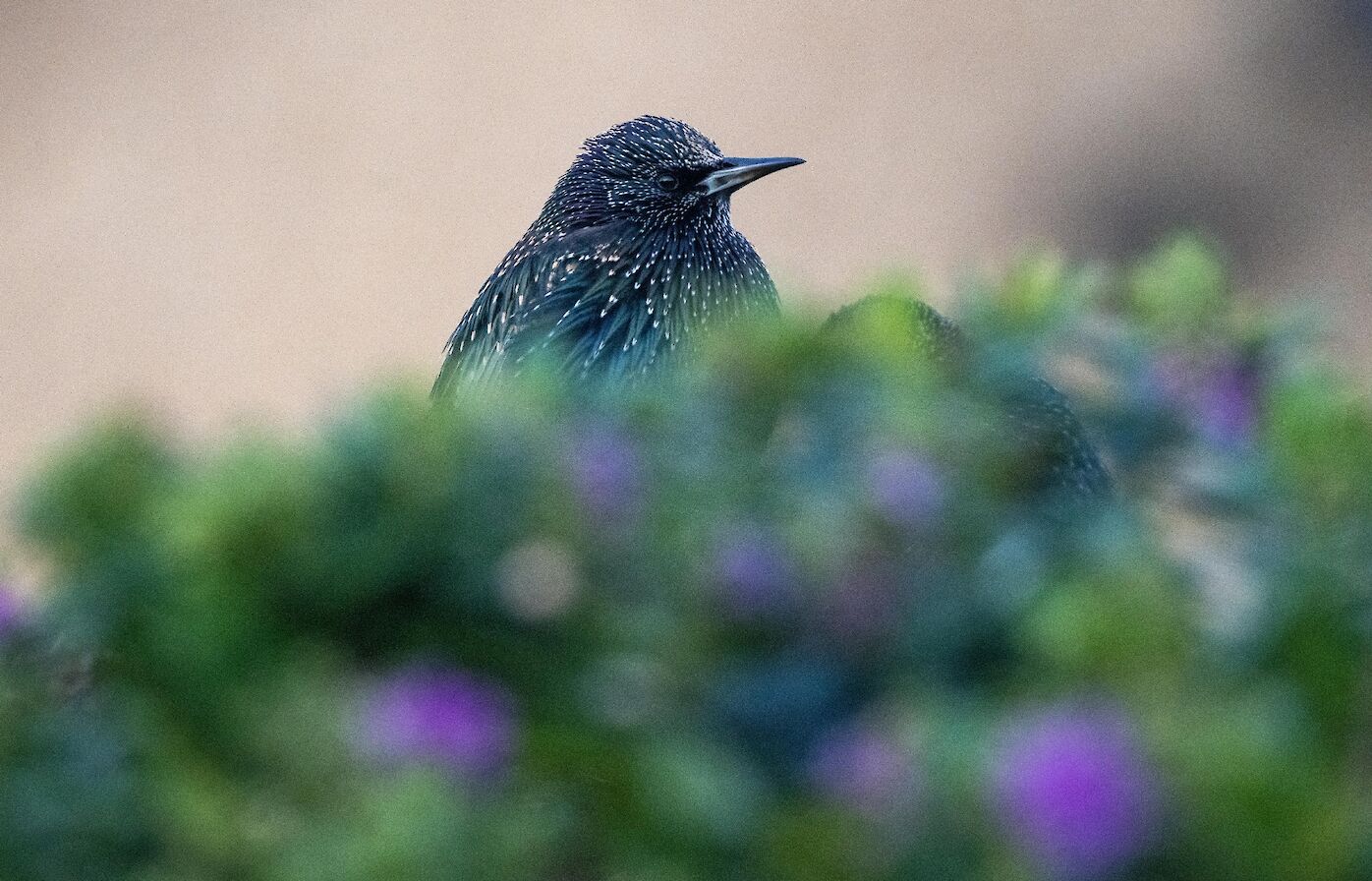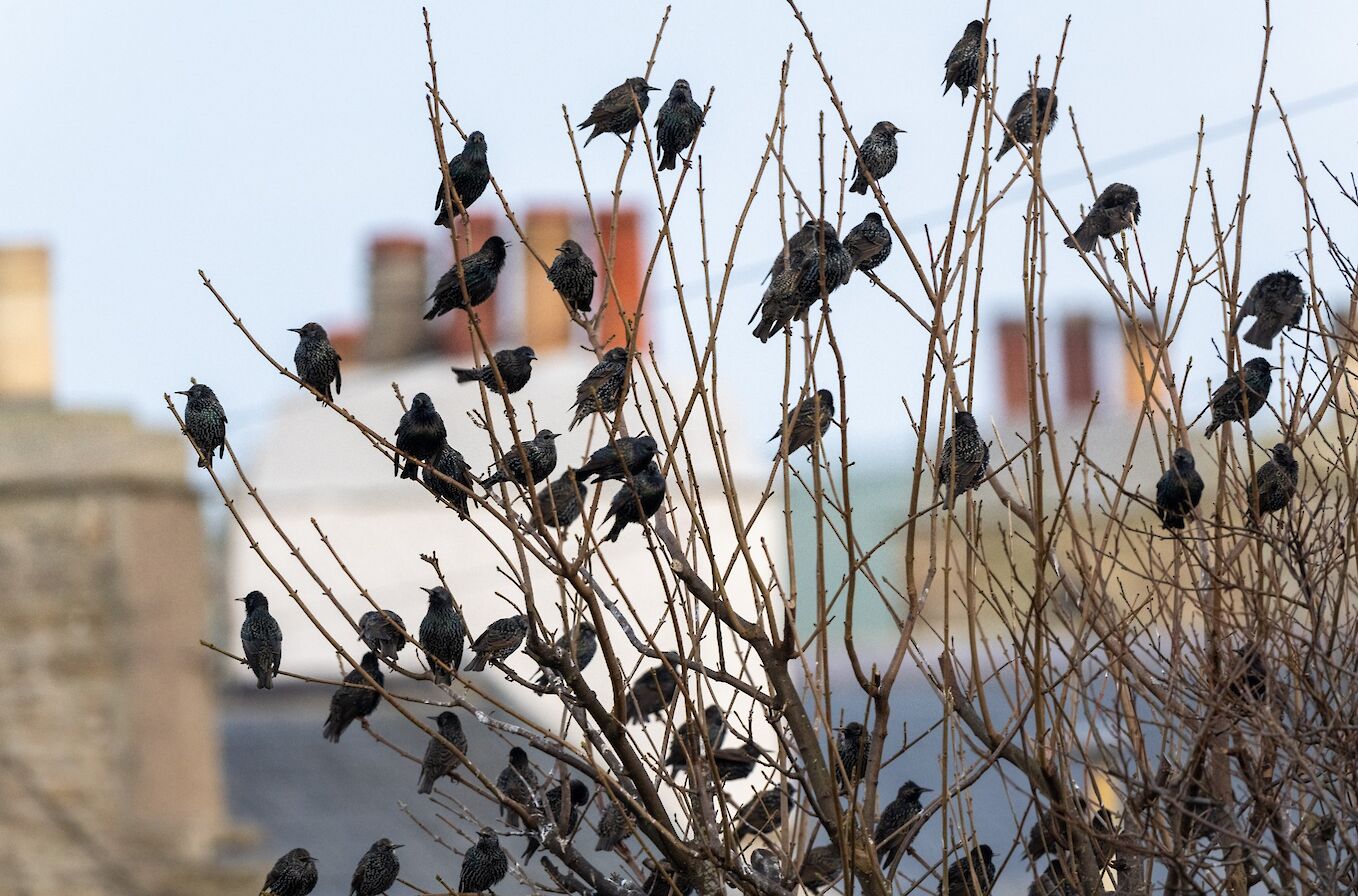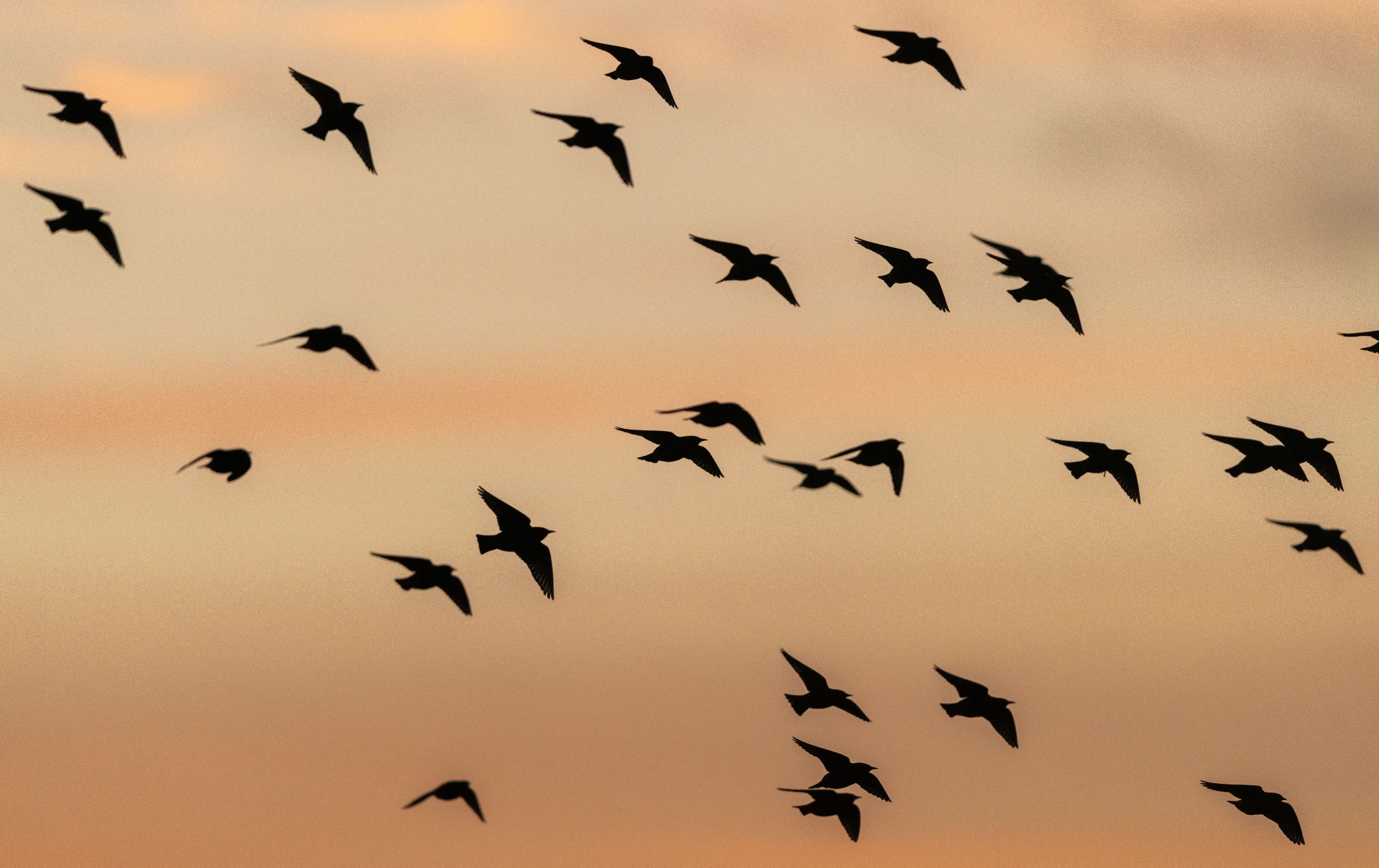During the early 1990s I was a student in Aberdeen. This owed more to the fact that I had just bought a new Aberdeen FC top rather than the lure of a four-year degree in Applied Bioscience and Chemistry.
I studied in the heart of the city and so would walk past Union Terrace Gardens on my way home each day. During the winter, especially on those crisp blue-sky days where the granite sparkled, there was often a spectacle that would make me linger, a starling murmuration.
Just imagine thousands of flying starlings tightly packed together, the shape of their dark flock ebbing and flowing, abrupt changes in speed and direction followed by a rapid drop underneath Union Bridge, where they would spend the night before departing the next morning. Unfortunately, and in common with many starling murmurations, the Aberdeen Union Bridge event no longer happens as the fortunes of this much overlooked bird wanes.
The word ‘murmuration’ is onomatopoeic, meaning that the word is a description of the sound that a flock of birds makes as it flies around the sky. Other bird species do murmurate but in the UK the term is normally used in reference to a flock of starlings.
Globally there are some truly spectacular murmurations, Rome sees flocks of up to five million starlings whilst flocks of hundreds of thousands strong can grace the skies near Gretna. In Orkney we get nowhere near these numbers but the principles why starlings gather like this in the first place remain the same.
Starling murmurations happen during the winter months, generally from October to March and peaking in December and January as the numbers of our resident birds are swollen by the arrival of others from Europe. Starlings are of course a resident breeding bird in Orkney and are incredibly adaptable, readily nesting in dry stone dykes or in fact almost anywhere that passes as a safe dry crevice. I was witness to this myself when we moved into our Kirkwall home around five years ago. Our chimney stack had seen better days and a pair of starlings were nesting in one of the pots. Once the family had fledged the stack needed repairing but I did feel a little guilty when a pair of starlings returned the next spring and hung around for a few days, no doubt confused as to why they could no longer access this perfect nest site.
They do however still feed on our lawn which gives the perfect opportunity to admire their beautiful plumage at close quarters. They are slightly less glossy looking in winter but nonetheless in the right light, their green and purple sheen, fringed with a sandy brown colour, is sublime.
And of course, they are brilliant mimics, I was often fooled when growing up by looking up to the sky in search of the curlew that had just been calling overhead, only to find it was a starling perched on the corner of a house roof. Unfortunately, one of my local starlings now includes the sound of a wailing car alarm in its repertoire!
So where to see a starling murmuration in Orkney? This might not be the most straightforward of answers but there are some sites which are more or less a given and give you a great chance of witnessing this exhilarating behaviour. However, I was driving at the top end of South Ronaldsay the other day and looked across to see a substantial flock of starlings, possibly a thousand birds, murmurating somewhere over Burray.
More unusual sites include the wreck of the ‘Reginald’ at the third barrier and the wreck of the ‘Juniata’ at Inganess, though these attract only small numbers. The two sites I photographed recently (with mixed fortunes) were the Pole Star pier in Stromness and the ‘Gloup’ in Deerness. Two sites, man-made and natural, serving the same function - the starlings are basically looking for a dry, safe place to spend the night.
Starlings don’t of course spend all day in flocks thousands strong, they are widely distributed feeding on whatever food source is available, be it in fields or foraging amongst the cast kelp on the shore where they can be found alongside turnstones and sanderlings.
Whilst in Stromness I find flocks have gathered together in the gardens towards the west end of the town, with small numbers dropping in to swell the numbers already perched in bushes, roof tops and on lamp posts. But what I really want to photograph is a sky full of starlings. However, I don’t have any clue as to when they might take off ‘en masse’. It's now dusk and the conditions are just about ok, but the light is rapidly fading and I’m worried it might be too dark by the time it happens.
I take as many varied shots as I can whilst they gather together and make the decision to drive back down to the Pole Star pier in anticipation of their arrival. But I’ve timed it wrong. No sooner have I shut the car door than I see the starlings rise as one. I jump back out of the car and luckily have a longer view back along the pier. The murmuration is perhaps a couple of thousand birds strong but they are ready to roost and instead of putting on a display of swirling and wheeling they almost immediately dive down under the pier to settle down for the night.
I can hear the constant chatter under the pier which is under almost complete darkness now. It’s here, listening to them all gathered together, that I really start to think about what’s going on behaviour-wise. Starlings are sociable and gregarious birds and it’s thought that they gather together like this not only to keep warm at night, but also to exchange information such as good feeding areas.
This is known as the ‘information centre hypothesis’ and suggests that when food is scarce these starlings mutually share information amongst others. The idea being (although very hard to prove) that a bird that has found food one day and shares the information overnight will benefit from similar information another day.
The next day I head to the Gloup in Deerness but I have even less luck photographically. Granted, the sleet has cleared and there is some colour in the sky to the west, but the starlings are coming in in dribs and drabs - twenty to fifty birds at a time and not hanging around, circling once and dropping in straight away. Another disadvantage here is that the birds can drop straight down into the Gloup itself where it’s too dark to photograph, or they can fly in from the sea entrance. You can only point your camera at one place at a time!
But then, as if a perfect reminder as to why starlings form murmurations prior to roosting in the first place, a female merlin passes me at head height at incredible speed, narrowly missing a starling as it drops down into the darkness. Starlings in murmurations of course benefit from safety in numbers. Such high concentrations of birds are a tempting target for predators - I’ve seen merlin, sparrowhawk, hen harrier, kestrel and peregrine all attempt to take Starlings.
But all these birds of prey like to target individual starlings, their attacks aren’t random and so it’s much harder for a predator to ‘lock-on’ to one bird amongst a swirling flock of hundreds or thousands.
Believe it or not, the starling is a bird in much decline. Such is the drop that it’s now ‘red listed’ as a bird of high conservation concern. Numbers are also declining across northern Europe and so we get fewer migrants than we have previously. As a result, many winter roosts are smaller than in the past.
The reason for this decline isn’t fully understood but changes in agriculture may be playing a part. The fortunes of the starling and farming have been inextricably linked over the centuries. Starlings greatly benefited as a breeding bird from changes in agricultural practices from around the mid-19th century onwards.
I often think Starlings have an interesting relationship with Orkney farmers. Not quite a love/hate relationship but interesting all the same. The main complaint of course is that ‘they make a hell o’ a mess!’ once gathered in outbuildings and byres. They also take their adaptability perhaps a step too far by choosing to build nests in the engine blocks of tractors and other vehicles, which of course is very much a fire hazard. Once nesting material has been removed it’s best not to assume that the episode is finished - the starlings will have built it up again by the afternoon!
But starlings do benefit farmers as they are heavily dependent on soil invertebrates during the breeding season, removing vast numbers of leatherjackets. However, the long dry summer we experienced this year had quite a profound effect on the breeding success of those birds reliant on being able to find insects. If this is a sign of climate change to come then things might just continue to be tough for starlings.
What a shame it would be to lose their winter ballet from our skies.
Find out more about Raymond’s work via his official website. You can also find him on Facebook, Twitter and Instagram.






